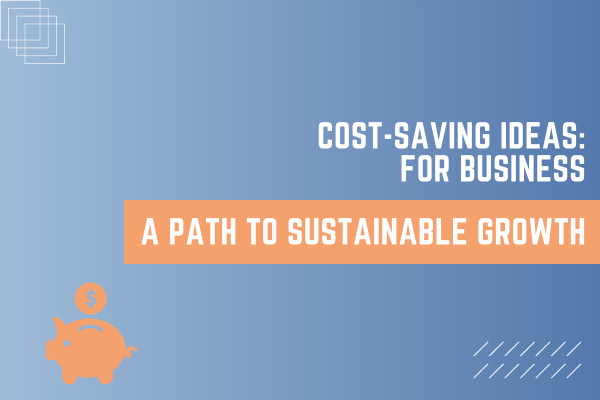- 01253 731791
- 9AM - 5PM Mon - Fri
- Bank House, 9 Dicconson Terrace, Lytham St Annes, FY8 5JY
In today’s competitive business landscape, cost-saving strategies have become essential for sustainable growth and profitability. Whether you are a small startup or an established enterprise, finding innovative ways to cut expenses without compromising quality is crucial. In this blog, we will explore some practical and effective cost-saving ideas that can help businesses optimize their operations and increase their bottom line.
1. Embrace Technology
Technology can streamline processes and reduce manual labor, leading to significant cost savings. Explore the following tech-driven approaches:
• Implement cloud-based solutions for data storage, collaboration, and software access, reducing the need for physical infrastructure and maintenance costs.
• Utilize project management and task automation tools to optimize workflow and increase productivity.
• Embrace virtual meetings and webinars to cut down on travel expenses.
2. Flexible Work Arrangements
Offering flexible work arrangements can be a win-win for both the business and employees. Employees save on commuting costs and experience increased work-life balance, while the company benefits from lower overhead expenses.
3. Supplier Negotiations
Regularly review contracts with suppliers and negotiate better deals to secure discounts or favorable payment terms. Consolidating purchases and building strong relationships with reliable suppliers can lead to substantial cost reductions in the long run.
4. Waste Reduction and Recycling
Implementing waste reduction and recycling initiatives can reduce disposal costs and enhance your business’s environmental image. Encourage employees to be mindful of resource usage and support recycling programs within the organisation.
5. Employee Training and Development
Investing in employee training and development can result in improved productivity and reduced turnover. Skilled employees are more efficient, leading to cost savings over time as fewer resources are wasted.
6. Outsource Non-Core Functions
Consider outsourcing non-core business functions, such as accounting, IT support, or customer service. Outsourcing allows access to specialised expertise while lowering overhead costs associated with maintaining in-house departments.
7. Go Green and Sustainable
Transitioning to eco-friendly practices not only helps the environment but can also lead to cost savings. Introduce energy-efficient appliances, consider green building materials, and explore renewable energy sources where feasible.
8. Refine Marketing Strategies
Evaluate your marketing efforts to determine the most effective channels for reaching your target audience. Focus on cost-efficient digital marketing, such as social media, email campaigns, and content marketing, to maximise ROI.
9. Preventative Maintenance
Regularly maintain equipment and machinery to prevent breakdowns and costly repairs. Scheduled maintenance not only extends the lifespan of assets but also reduces downtime and operational disruptions.
10. Energy Efficiency
One of the most significant expenses for businesses is energy consumption. Adopting energy-efficient practices not only reduces operational costs but also demonstrates a commitment to sustainability.
Consider the following initiatives:
• Conduct an energy audit to identify areas of high consumption and implement energy-efficient lighting, HVAC systems, and appliances.
• Encourage employees to switch off lights and equipment when not in use.
• Embrace remote work options to reduce the need for office space and cut utility expenses.
Conclusion
Cost-saving ideas are not about cutting corners; they represent a strategic approach to managing resources effectively. By adopting energy-efficient practices, leveraging technology, and investing in employee development, businesses can optimize their operations, reduce expenses, and position themselves for sustainable growth in the long term. Embracing eco-friendly and socially responsible practices will not only improve the company’s bottom line but also strengthen its reputation in an increasingly conscious market. Remember, cost savings are not a one-time endeavour; continuous assessment and innovation are essential to stay competitive and financially robust.


